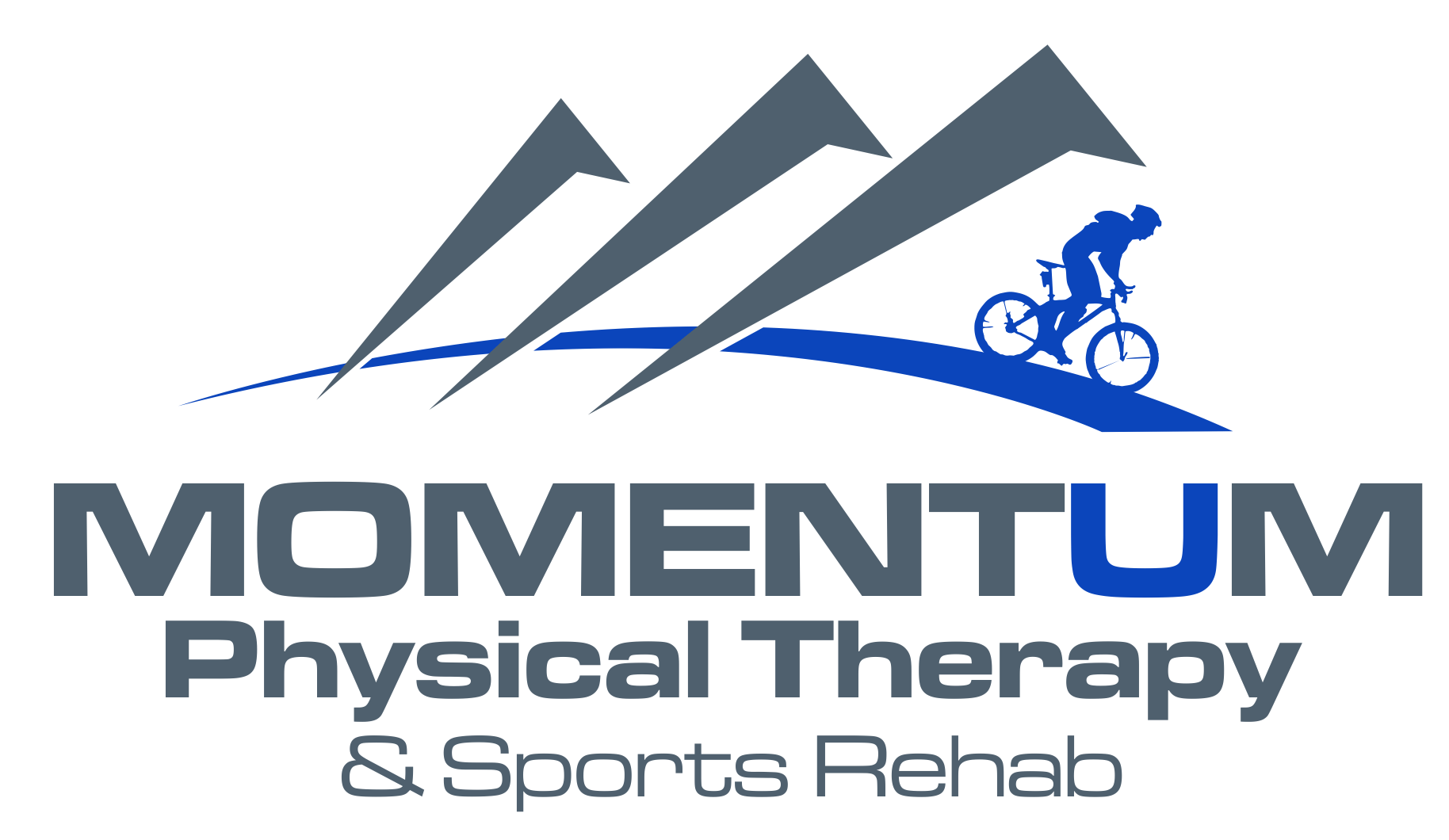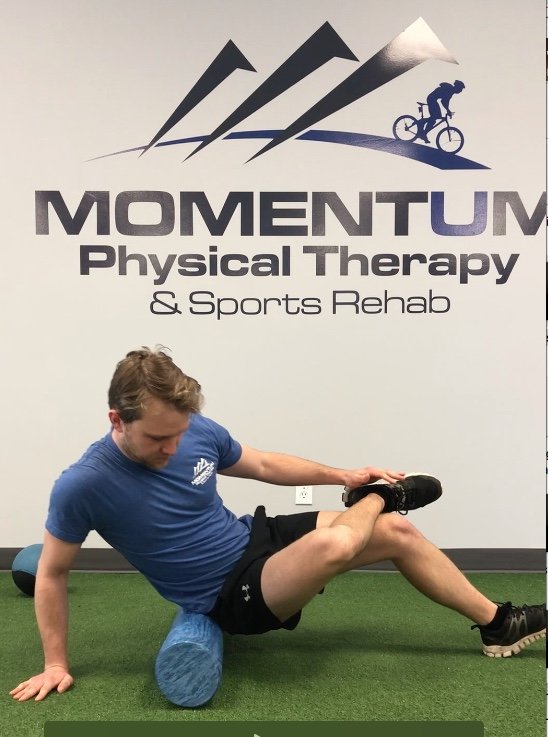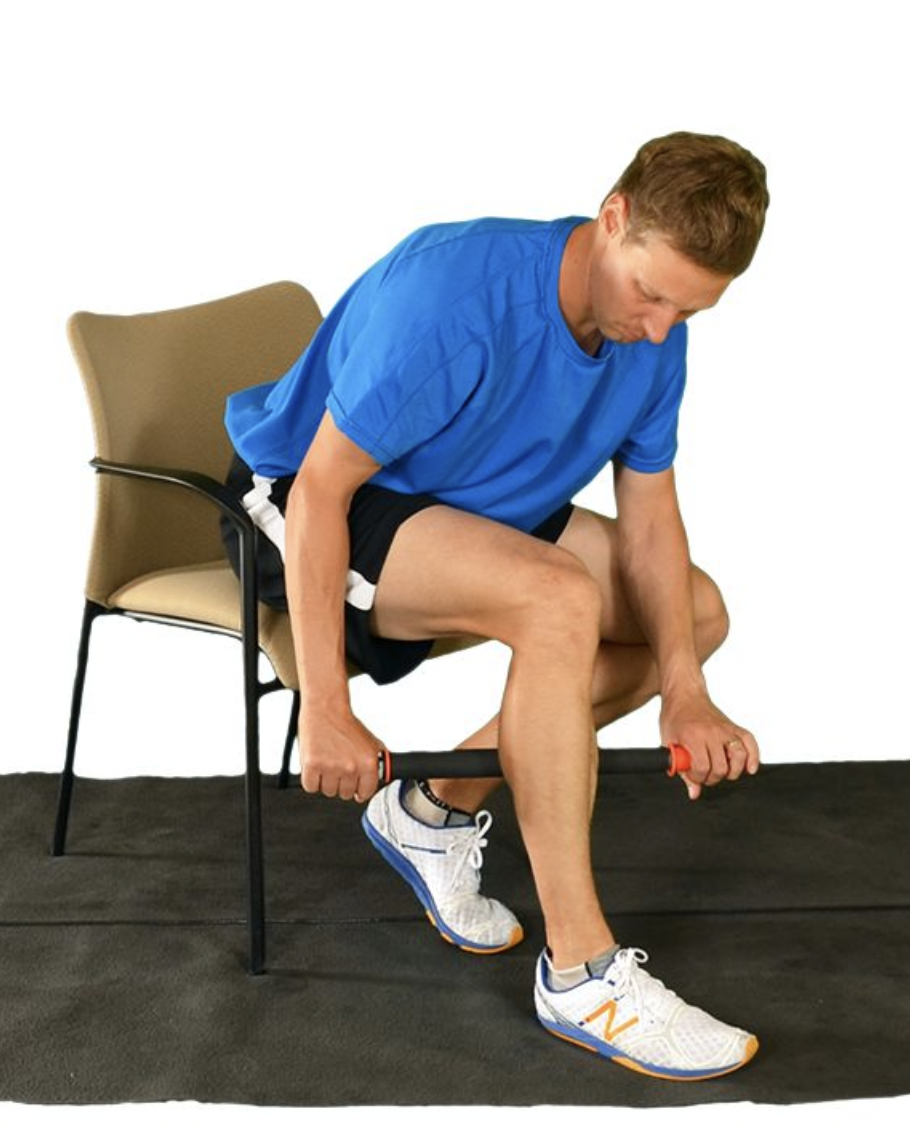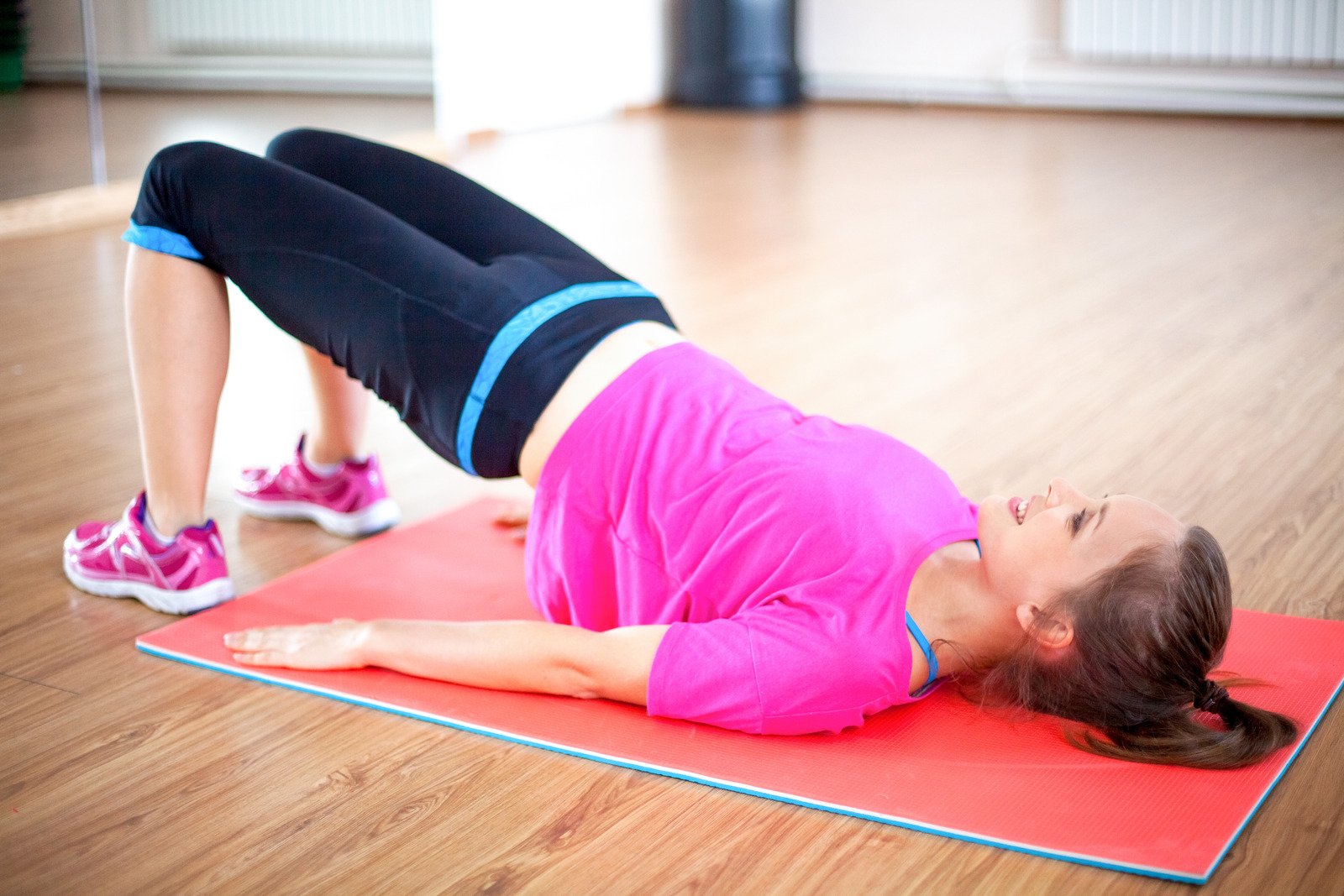Pelvic Floor Physiotherapy
Have you heard of Pelvic Floor Physiotherapy before?
Have you wondered what conditions are treated with Pelvic Floor Physiotherapy?
Maybe you have wondered if it might help YOU?
Hi, I’m Catherine Stoyles and I am a pelvic floor physical therapist at MOMENTUM Physical Therapy & Sports Rehab in Okotoks.
To become a registered pelvic floor physiotherapist in Okotoks, AB, I had to complete a lot of education! First, I obtained my Bachelor of Social Science degree from the University of Ottawa before obtaining my Master of Science (Applied) in Physical Therapy degree from the McGill University in Quebec. I then later went through significant advanced training in order to become a registered pelvic floor physiotherapist!
Another fun fact is that I did the majority of my university schooling in French! So yes, I am completely bilingual and would be happy to conduct your appointments in English or French.
What is Pelvic Floor Physiotherapy?
Pelvic Floor Physiotherapy is a specialization within Physiotherapy that deals with issues of the pelvis, pelvic floor muscles, and pelvic organs. It considers factors that affect the pelvic floor from throughout the body such as posture, breathing, diet, stress, and more. Pelvic Floor Physiotherapists commonly treat women with pelvic floor concerns and some therapists specialize in treating men too.
As a specialization, Pelvic Floor Physiotherapy requires advanced training taken after completing a Physiotherapy degree. A Pelvic Floor Physiotherapist has knowledge of the pelvic floor muscles, nerves, organs, and connective tissues and is trained in performing external and internal assessments and treatments of these structures via the vagina and/or rectum.
urinary stress incontinence
urgency/frequent urination
painful intercourse
fecal/gas incontinence
pelvic organ prolapse
diastasis rectus abdominus (abdominal separation)
pregnancy related pain - pelvic girdle, back, rib, etc
postpartum recovery
A Pelvic Floor Physiotherapist uses education, hands on techniques, and home exercise programs to help prevent and treat pelvic floor dysfunction. Just as no two people, pelvic floors, or histories are the same, Pelvic Floor Physiotherapy treatment is personalized to each individual.
Some things that Pelvic Floor Physiotherapy should not be is painful or embarrassing. While some aspects of an assessment or treatment can be physically uncomfortable, it should not be painful. Sessions can be paused or adjusted as needed to make sure the experience is comfortable. Many of the topics that will be discussed in a Pelvic Floor Physiotherapy assessment and follow up treatments are also sensitive and people may find them difficult to discuss. However, it’s important to remember that a Pelvic Floor Physiotherapist regularly discusses taboo or private topics (and typically enjoys educating people about those hard-to-talk-about subjects) and will work with a patient to help them feel comfortable and listened to.
Why Is Our Pelvic Floor So Important?
The pelvic floor plays a vital role in health and wellness for women and men (yes, men have pelvic floors too!) The pelvic floor is made up of the muscles, nerves, blood vessels, and connective tissues that attach to the bottom of our pelvis and enclose the urethra, vagina, and rectum. The pelvic floor muscles work in combination with the abdominals, back, and hips.
The pelvic floor has various functions. It serves to control bladder and bowel movements as well as support the pelvic organs like the bladder, vagina, uterus, and intestines. The pelvic floors also play a role in sexual arousal and function. Pregnancy and delivery can put strain on the pelvic floor and good control of these muscles helps ensure a healthy and comfortable pregnancy and is an especially important consideration for vaginal births.
Outside of the more obvious roles, the pelvic floor is often overlooked but is it also important for general activity and sports. The pelvic floor is the base of the ‘core’ and is an important postural muscle group. Good pelvic floor strength and control allows us to build greater strength off of it. It also helps to manage the intra-abdominal pressure created when we lift, run, jump, etc. Over time, poorly managed intra-abdominal pressure can cause or exacerbate issues with incontinence, pelvic organ prolapse, and diastasis recti abdominis (abdominal separation).
Many of the hip muscles are also connected to the pelvic floor, either directly or functionally. For example, the obturator internis is a hip muscle that originates and forms the ‘wall’ of the pelvic floor and it is often involved in hip and leg pain. Because of the muscular, fascial, and nerve connections, the pelvic floor can be related to chronic hip and low back pain.
Learning how to control, strengthen, and relax the pelvic floor is important for everyone. It can help to ensure our digestion and elimination system functions smoothly. Plays a role in intimate relationships by aiding in sexual enjoyment and helping to keep sexual activities pain free. And good pelvic floor function allows us to be active by supporting our core during daily life as well as more physically challenging activities.
What Does A Pelvic Floor Physiotherapy Session Involve?
Pelvic floor physiotherapy assessments are done one-on-one in our private exam room. We start out with a detailed discussion about your current concerns and medical history. Many things can affect pelvic floor health including medical conditions, bladder and bowel habits, pregnancy, child birth, injuries, trauma, and even stress.
A physical exam is done to help confirm the root causes of your concerns. This may include assessments of general posture, hip mobility and strength, and abdominal function including DRA (diastasis recti abdominis) testing. Direct examination of the pelvic floor is also important and can be done externally and internally.
An internal pelvic exam is typically recommended as it allows direct assess of tissue health, pelvic floor muscle strength and tone, trigger points (muscle knots), scar mobility and sensitivity, and joint movement. The internal exam is done by inserting one or two gloved fingers into the vaginal and/or rectal openings. You are draped/covered throughout the exam and different positions can be used to ensure you are comfortable. When necessary, treatment techniques such as trigger point muscle release, scar massage, and joint mobilizations can be done internally. We can also teach pelvic floor muscle strengthening exercises during an internal exam and make sure they are done correctly.
Throughout all stages of a Pelvic Floor Physiotherapy session you can expect to be told what needs to happen, when, and why and can consent or say no to any aspect. We will also educate you on what is happening with your body and pelvic floor and answer any questions you have.
The final aspect of a Pelvic Floor Physiotherapy session is a personalized home management program that typically includes self treatments, breathing exercises, stretches, and exercises for the pelvic floor and whole body.
3 Physiotherapy Based Strategies to Engage the Pelvic Floor
Learning to engage the pelvic floor is important for everyone. Good pelvic floor control and strength is vital for our health and overall strength and stability. The pelvic floor controls the bladder and bowel movements, plays a role in sexual function, and it forms the base of our ‘core’ allowing us to move and function pain free.
There are different ways we can connect to and engage the pelvic floor. You can practice all three or choose the one that feels right and works the best for you.
Remember that relaxing the pelvic floor is just as important as contracting it. Whenever you are working on engaging or strengthening the pelvic floor, make sure you relax the muscles completely afterwards. A tight and short pelvic floor can result in issues like incontinence and pain.
Diaphragmatic Breathing
Our breath is a key component in learning how to connect to and engage the pelvic floor. The pelvic floor is more of a hammock than solid ground and it naturally moves with our breath. It mirrors the movement of the diaphragm. As we breath in, the diaphragm contracts and flattens downward and pelvic floor gently expands and lowers, as we breathe out, the diaphragm relaxes the pelvic floor rises up and inward.
To take advantage of this natural movement and engage the pelvic floor, start by lying or sitting somewhere comfortable without many distractions. Take a deep breath into your belly and feel both your belly and pelvic floor expand. As you exhale, feel the belly empty and the pelvic floor draw back in. Breathe in deeply again and feel the belly and pelvic floor expand and on your next exhale use the pelvic floor muscles to gently squeeze and close around your urethra, vagina, and rectum. As you inhale again, relax completely and feel the pelvic floor expand.
Key tip: Make sure you aren’t actively pushing down through the pelvic floor when you inhale. Simply let the breath move it gently.
2. Visualization
Visualization is a powerful tool used by athletes to optimize movements and engaging the pelvic floor is no different. This can be a challenging strategy to use if you aren’t familiar with what the pelvic floor looks like so familiarizing yourself with the anatomy is very helpful. The pelvic floor muscles form a hammock from the front of the pubic bone to our ‘sits’ bones along the sides and back to the coccyx or ‘tailbone’. The urethra, vaginal opening, and rectum are lined up along the centre of the hammock.
To use visualization to engage the pelvic floor, sit or lay somewhere comfortable without many distractions. Imagine there is a marble (or tampon, etc) at the opening of the vagina. Inhale to relax and prepare and as you exhale try to draw the marble inwards and upwards behind the pubic bone. Inhale and relax the muscles completely.
3. Glute Contraction
The glute or buttock muscles are closely related to the pelvic floor and by strongly contracting the glutes we can get ‘co-contraction’ of the pelvic floor. We can also work on engaging the pelvic floor actively as we contract the glutes. Any glute strengthening exercise such as squats, donkey kicks, or deadlifts can co-contract the pelvic floor but bridges are a great place to start to more easily feel the activation.
To engage your pelvic floor by doing a bridge start by laying on the ground on your back. Bend your knees and plant your feet hip width apart near your buttock (grazing your heels with your fingertips can help make sure your feet are close enough). Inhale to relax and prepare and as you exhale, squeeze your glutes and lift your hips. Try to create a straight line angling from your shoulders to your knees. Inhale and lower your hips back to the ground, relaxing the glutes and the pelvic floor completely.
How Do I Know If I Have Diastasis Recti?
Diastasis Recti or Diastasis Recti Abdominis (DRA), also referred to as an abdominal separation, occurs when the tissue along the centre of the abdomen stretches leaving a gap between the two sides of the abdominal muscles. It can result in reduced support and strength. It occurs commonly with pregnancy but can also be caused by excess abdominal weight or repetitive abdominal loading activities. A DRA may be noticeable in standing as a bulging abdomen or central indentation but not always.
To test yourself for a DRA follow these steps:
lay on your back with your knees bent and feet planted on the ground
use your fingers to press into the centre line of your abdomen at three points,
between your pubic bone and bellybutton
just above your belly button
between your belly button and rib cage
lift your head and shoulders off the ground and feel for the space between the muscles at each point
make note of how many fingers apart the muscle wall is as well as how deep your fingers press into the belly
A gap of more than a couple fingers, or more importantly, being able to press easily or deeply into the belly with little resistance (even with only one or two fingers) suggests you may have a DRA. A Physiotherapist trained in management of a DRA can help you confirm if you have one and guide you in resolving it.
For some women who develop a DRA during pregnancy, it will resolve on its own over time after the baby is delivered. However, for other women a DRA can persist indefinitely if not addressed. Specific, progressive exercises as well as postural changes, movement training, and breathing strategies can help to reduce or eliminate a DRA. Rarely, surgery is needed if a DRA is significant and does not improve with exercises and conservative management.
What Is Pelvic Organ Prolapse?
Pelvic Organ Prolapse (POP) refers to a loss of support of a pelvic organ. Different terms are sometimes used for POP depending on what organ is involved.
Urethrocele: the urethra (passageway for urine) sitting lower along the top of the vaginal canal
Rectocele: the rectum pressing down though the anus
Enterocele: the small intestine pressing down into the vaginal canal
Uterine prolapse: the uterus pressing down into the vaginal canal
Vaginal vault prolapse: top of the vagina pressing down into itself, sometimes seen after a hysterectomy (surgical removal of the uterus)
POP can vary in the degree of movement downwards and may be referred to by different grades.
POP can be asymptomatic or cause feelings of pressure or heaviness in the vagina. Symptoms may be felt all the time or only with certain activities. With more progressed POP, tissue may be seen at or past the opening of the vagina. Women may commonly experience urinary incontinence, difficulty emptying bowels, and other symptoms of pelvic floor dysfunction along with POP.
There are various risk factors for developing POP which include:
pregnancy
vaginal deliveries
chronic constipation and straining
respiratory issues with long-term cough
genetic factors
increased age
hysterectomy
repetitive heavy loading or high impact activities
obesity
Conservative management is the first line approach for all types of POP. Exercises and lifestyle modifications can increase support for the pelvic organs and reduce strain on the pelvic floor which can improve symptoms and sometimes the degree of POP. A pessary is a device worn inside the vagina that can provide support for the pelvic organs and can also be helpful for some women with POP. Some women may need surgery to correct POP but this is typically done as a last resort and conservative management techniques are still helpful to compliment a surgical correction.
Let’s Get Started
At MOMENTUM Physical Therapy & Sports Rehab in Okotoks, we care about you!
If you are dealing with any pelvic floor concerns, I would be happy to talk with you to determine if pelvic floor physiotherapy would be of benefit to your recovery.
Call us today at 403-982-5600 to book an appointment with me, Catherine Stoyles, pelvic floor physiotherapist.
Not sure if you are need to see a pelvic floor phyio but would like more information, email me. I would be happy to answer any further questions you might have.
MOMENTUM Physical Therapy… we’re here for YOU!
Frequently Asked Questions - Pelvic Floor Physio
Can Pelvic Floor Physio help with painful sex/intercourse?
Yes! Pelvic Floor Physiotherapy can treat pain with sexual activity and intercourse. There are many different factors that can contribute to this type of pain including overactive pelvic floor muscles, muscle trigger points, scar immobility and sensitivity, hormonal changes related to pregnancy, postpartum, or menopause, and certain medical conditions. Oftentimes there are a combination of factors influencing painful sexual activity. Pelvic Floor Physiotherapy can identify the different factors contributing to the pain and can treat them as well as refer to the woman’s doctor where appropriate.
Will I ever be able to sneeze or laugh without worrying about peeing my pants?
Yes! Stress incontinence, the leakage of small or large amounts of urine with physical movement or activity, is common in women but it isn’t normal. Pelvic Floor Physiotherapy can identify and treat the various causes of stress incontinence. Treatment typically involves hands on treatments as well as a personalized home exercise program. It is possible to sneeze, laugh, run, and even jump on a trampoline without leaking urine!
Should I do ‘Kegels'?
Maybe. ‘Kegels' are a common name for exercises to strengthen the pelvic floor muscles. In the past, ‘Kegels’ were typically prescribed with a high number of repetitions and intensity. However, pelvic floor strengthening, especially at a high intensity, is not always appropriate. Many symptoms of pelvic floor dysfunction, including urinary stress incontinence/leakage, can be caused by overactive pelvic floor muscles. Performing ‘Kegels’ or any pelvic floor strengthening without knowing the state of the pelvic floor muscles may not help symptoms or could even make the issue worse. Connecting with and engaging the pelvic floor along with full relaxation afterwards is a better place to start. Getting a Pelvic Floor Physiotherapy assessment to receive a personalized program will also make sure you are doing the right exercises for your body and pelvic floor.
What does Pelvic Organ Prolapse mean?
Pelvic Organ Prolapse (POP) refers to a loss of support of a pelvic organ, like the bladder, uterus, or small intestine, causing it to drop down from its typical position. POP can be asymptomatic or cause feelings of pressure or heaviness in the vagina. Pregnancy and vaginal deliveries are common causes for POP but there are other risk factors for developing it as well including chronic constipation and straining, respiratory issues with long-term cough, genetic factors, age, hysterectomy, repetitive heavy loading or high impact activities, and obesity. POP can vary in degrees but in most cases can be managed conservatively with exercises, lifestyle modifications, and pessaries as needed. Some women may need surgery to correct POP but this is typically done as a last resort and conservative management techniques are still helpful to compliment a surgical correction.
Should I wear a pregnancy support belt?
Maybe. Pregnancy support belts are stretchy but supportive devices worn around the hips and/or belly to support the pelvis and abdomen during pregnancy. They may be helpful for some women who experience pain during pregnancy. There are many different factors that can cause pain in the pelvis, hips, back, and belly during pregnancy. Some of these factors include stress, diet, and nervous system sensitization which may not be helped by a belt. Seeing a Pelvic Floor Physiotherapist can help determine if a pregnancy support belt is right for you.
Do I need Pelvic Floor Physiotherapy if I’ve had a C-section?
Yes! Vaginal deliveries are not the only thing that put strain on the pelvic floor. Months of carrying a baby (while pregnant and afterwards), hormone changes during pregnancy and postpartum, postural changes, and more can all affect the pelvic floor. A Pelvic Floor Physiotherapist can also help with scar management and returning to physical activity after a c-section.
Momentum Physical Therapy, located in Okotoks, Alberta, is ‘Here for YOU’.
If you are experiencing any pain or injury, or you just want to learn more about how pelvic floor physio can help heal your pain, don’t delay and call Momentum Physical Therapy today. You can reach a registered physiotherapist at Momentum by calling 403-982-5600. We look forward to helping you feel you best again.





















































